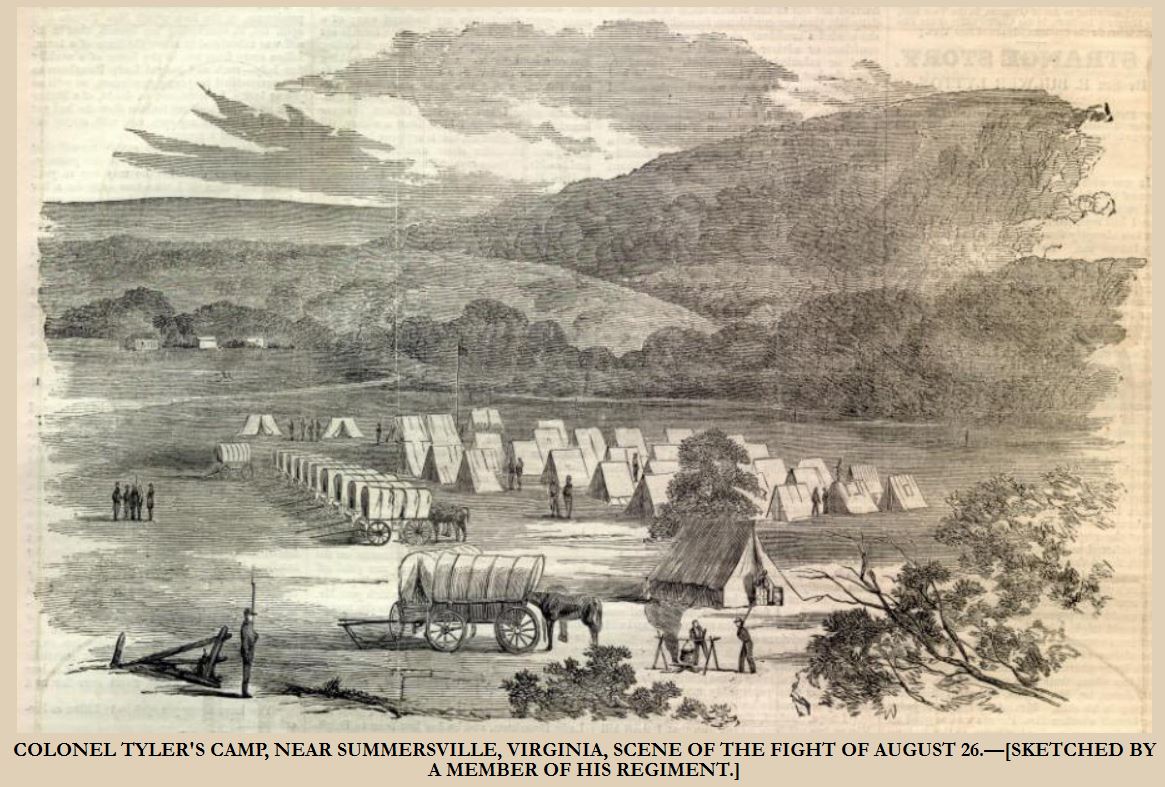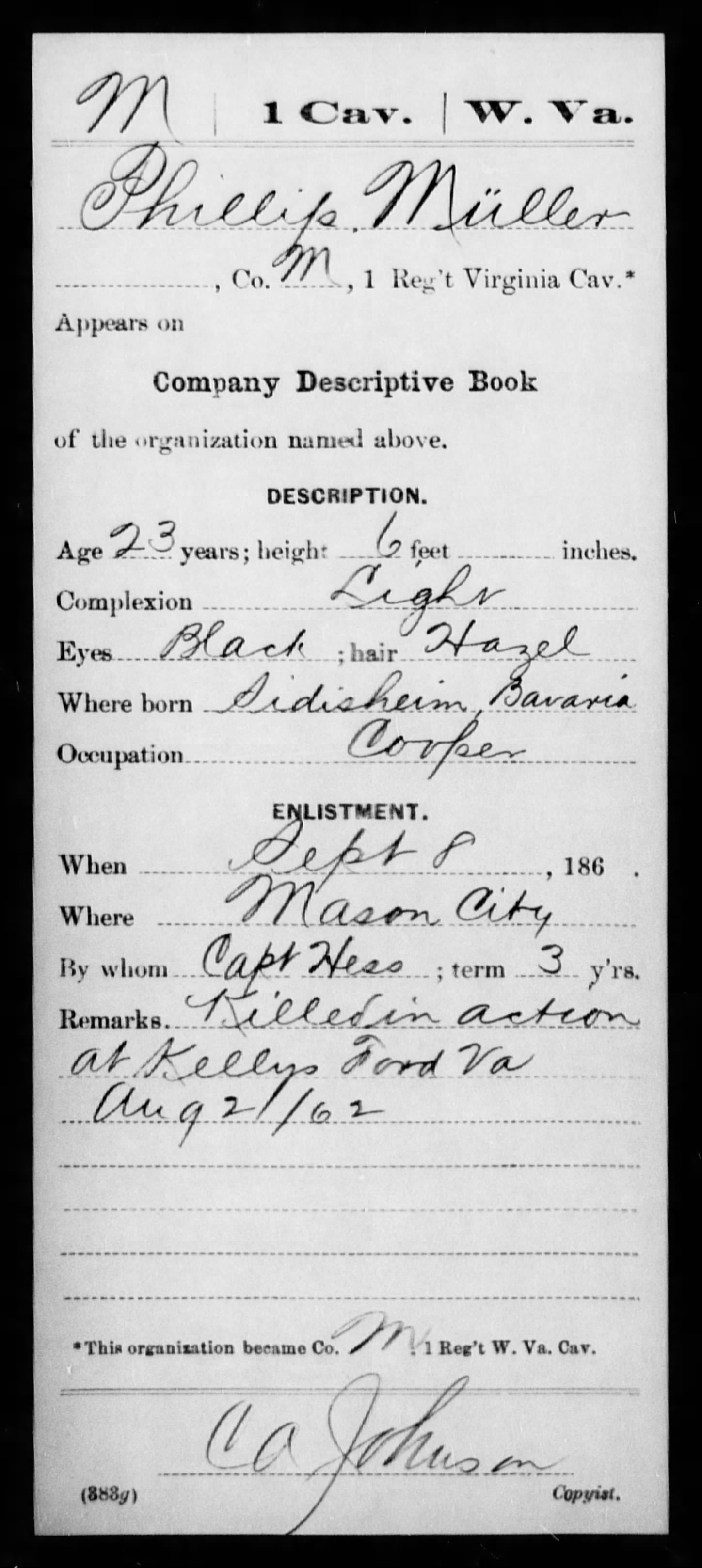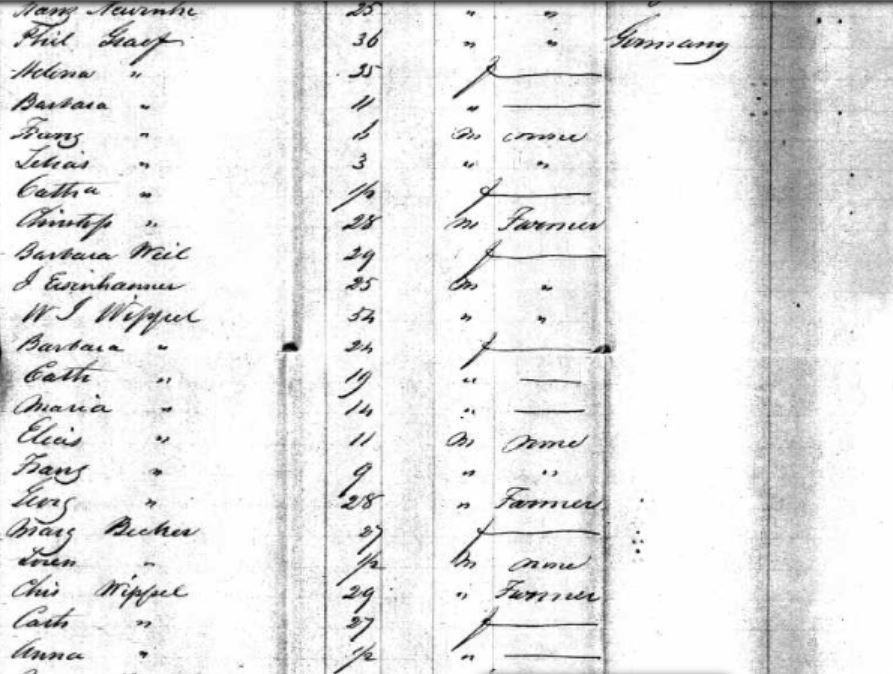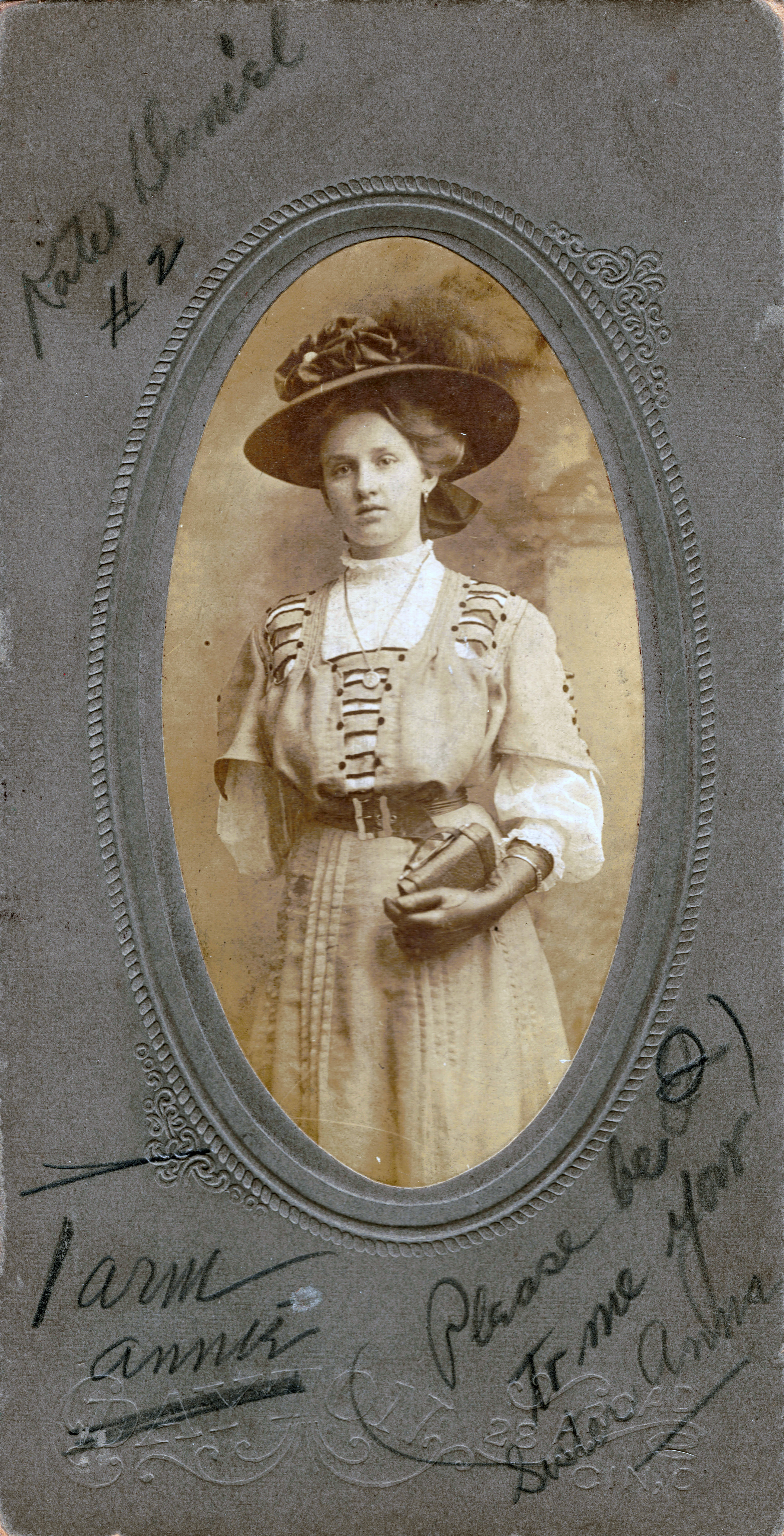Entry #21
Philipp Müller (Miller)was the brother of my two times great-grandfather, Andrew Miller. As with many who are blogging this weekend for the 52 Ancestors Challenge, I have chosen a Civil War soldier to honor. Both brothers served, but Philipp paid the ultimate price.
Philipp was the son of Philipp Müller and Catharine Reich. Born in 1838, he immigrated with his parents, brothers, and sisters, from Kleinniedesheim, a hamlet of Frankenthal in Bavaria in 1852. (As a side note, Philipp’s service record indicates that he was from Didisheim, Germany, but this is wrong.) The family came in through the port of New York, but hastily made their way to the river town of Pomeroy, Ohio. From their speedy journey (about eight days), I assume that they were joining family there.
The elder Philipp became a carpenter in the town of Pomeroy. The younger Philipp went into the trade of cooper – a skill that was in great demand because of the barrels needed for the shipment of salt from the local mines. By 1859, Philipp had made a match with Sophia Louisa Karoline Haag, the daughter of Christian Haag, a gunsmith from Württemberg. Together Philip and Sophia began to have a family almost immediately with daughters Eva Augusta born in June 1860 and Sophia born in June 1861.
I am no expert on the Civil War, but I tried to find what the catalyst was for over 80 men from the Meigs County area to enlist en masse in the First Virginia (loyalist) Cavalry in Mason City, Virginia, on September 8, 1861. I looked at the events of late August and early September. I think I found the reason. On August 26, Confederate General John B. Floyd surprised Colonel Erastus Tyler’s 7th Regiment Ohio Volunteer Infantry and captured about 200 of his men where they were encamped at Kessler’s Cross Lanes, Virginia. (This is known either as the Battle of Kessler’s Cross Lanes or the Battle of Summersville).

This territory would later become West Virginia and the regiment’s name would be changed from the First Virginia to the First West Virginia Cavalry. Young Philipp Müller must have been among the men who felt the action was threatening their home which was just across the Ohio River from Virginia.
At any rate, 23-year-old Philipp went off to war with his peers. He enlisted for a period of three years and served in Company M of his regiment. I recognize many Meigs County names among the members of Company M. Philipp Müller’s brother-in-law, Louis Haag, enlisted at the same time, as well, and was made a Second Lieutenant. I was able to locate a research paper from the George Tyler Moore Center for the Study of the Civil War at Shepherd University, Shepherdstown, WV, that contains interesting details and statistics on the First West Virginia Cavalry, including some specifics on Company M. The database used for the research showed that:
…about 10% of the men were born in states that eventually comprised Germany. Our database tells us that most of the German-born troopers were in one 1st Cavalry company – Company M, a German-speaking company. We know Company M was German-speaking because of a curious letter in the records – a letter of resignation written in February 1862 by First Lieutenant Robert W. Playford. Playford had been elected temporary first lieutenant of Company M, pending appointment of a German-speaking officer. None was appointed. The clearly frustrated lieutenant resigned because he “could not issue commands in the company’s native tongue.” (Retrieved May 26, 2014 from http://www.shepherd.edu/gtmcweb/research_papers.html)
Philipp Müller was fairly typical too in his trade of cooper. While about half of the regiment were farmer’s, he fill into the next largest category, those of skilled laborers. such as blacksmiths, carpenters, and shoemakers. This group constituted the next most frequent occupational category (29%). From Philipp’s service record we have a physical description of him. Although there were errors in the transcription of it, Philipp was six feet tall, with a light complexion, hazel eyes and black hair.

We know that Philipp was engaged in the action to secure Bloomery Gap on February 14, 1862, because his service record indicates that he “lost in action one carbine, one rifle, one picket rope and pin.”
There is no other information about the specifics of his service until August 21, 1862 when Philipp Müller was killed in action at Kelly’s Ford, Virginia. (This was not the Battle of Kelly’s Ford which took place March 17, 1863, but there was a documented skirmish on this date.) Tragically, he was shot through the neck. Sophia had just given birth to their third child, Philipp, on May 23, 1862. I am not sure how long baby Philipp lived, but he is not present with his mother in the 1870 census. Sophia eventually married Phillip Huber. After his death, she filed for and collected a widow’s pension for her first husband’s service until her death in 1910.
Growing up, I knew nothing about Philipp Müller. I never knew that my great, great-grandfather had a brother, much less one that had been killed in the Civil War. All we children ever heard was that Andrew Miller was a Civil War veteran. Andrew was about 16 at the time his brother died. He served at the very end of the war, not enlisting until February of 1865. He entered the war late enough that he never saw significant action. He served on provost duty in Macon, Georgia. I have to wonder if this was his parent’s doing. Did Philipp, senior, and his wife discourage Andrew from going off to war? Were they relieved that their youngest child did not have to fight?
In 1866, the state of West Virginia authorized the minting of over 26,000 medals to honor its Union Civil War soldiers. Philipp Müller was posthumously awarded this medal. Although nearly 4,000 medals are unclaimed, his name is not on that list, so I presume it was given to his widow or daughter.
For more resources on the First West Virginia Cavalry see the following:
West Virginia Civil War Medals
First West Virginia Cavalry by Linda Cunningham Fluharty with David L. Aeberli
 This photo was probably taken between 1880 and 1883 since it was shot before Joseph’s immigration to the U.S.
This photo was probably taken between 1880 and 1883 since it was shot before Joseph’s immigration to the U.S.



















